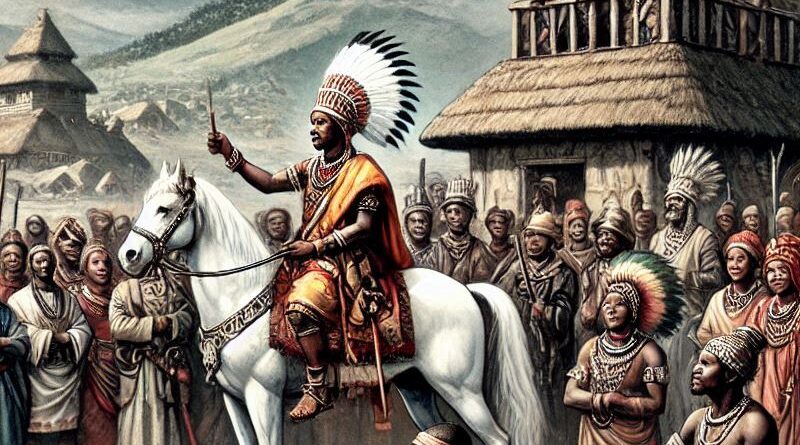
The Bonny Chieftaincy System
Deep within the heart of the Niger Delta lies Bonny Island, a place rich in history, culture, and governance. One of the most fascinating aspects of this vibrant island is its chieftaincy system—a unique blend of traditional leadership and modern influences that has withstood the test of time. In this blog post, we’ll embark on a journey to explore the intricate and storied Bonny chieftaincy system, revealing its historical roots, cultural significance, and contemporary relevance.
Contents
Ancient Origins and Historical Roots
The chieftaincy system in Bonny Island dates back centuries, with its origins deeply intertwined with the founding of the Kingdom of Bonny. The kingdom, known as Okoloama, was established by the Ibani people, who were skilled fishermen and traders. The Ibani society was organized around a chieftaincy system, where leadership was vested in the hands of the Amanyanabo (King) and a council of chiefs representing various families and communities.
The early chiefs of Bonny were responsible for maintaining law and order, overseeing trade, and ensuring the welfare of their people. Their roles were not only administrative but also spiritual, as they were considered custodians of the land and its traditions.
The Structure of Bonny Chieftaincy
At the heart of the Bonny chieftaincy system is the Amanyanabo, the paramount ruler of the kingdom. The Amanyanabo is regarded as the spiritual, political, and cultural leader of the Ibani people. The selection of the Amanyanabo is a meticulous process, involving consultations among the chiefs and the various families that make up the kingdom.
Supporting the Amanyanabo is the council of chiefs, known as the House of Chiefs. This council comprises various ranks of chiefs, each with specific roles and responsibilities. The chiefs represent different families and communities within Bonny Island, ensuring that governance is inclusive and balanced. The council of chiefs functions as an advisory body to the Amanyanabo, providing guidance on matters of state, trade, and community welfare.

Notable Chiefs and Their Contributions
Throughout its history, Bonny Island has been home to many notable chiefs who have left an indelible mark on the kingdom. One such figure is King William Dappa Pepple I, who ruled in the mid-19th century. His reign saw significant interactions with British colonialists, leading to his exile to Britain. Despite these challenges, King Pepple’s leadership helped shape the modern identity of Bonny Island.
Another influential figure was Chief Adango Amakiri, who played a crucial role in the island’s economic development during the 20th century. His efforts in promoting trade and industry helped Bonny Island transition from a primarily agrarian society to a thriving commercial hub.
Cultural Significance and Traditions
The chieftaincy system is deeply embedded in the cultural fabric of Bonny Island. The chiefs are not only leaders but also custodians of the island’s rich cultural heritage. Traditional ceremonies, festivals, and rituals are integral to the chieftaincy system, serving to reinforce the cultural identity of the Ibani people.
One of the most significant cultural events is the coronation of the Amanyanabo, a grand ceremony that attracts dignitaries from far and wide. The coronation is a celebration of the kingdom’s history, culture, and unity, with elaborate displays of traditional music, dance, and attire.

The Chieftaincy System in the Modern Era
In the contemporary era, the Bonny chieftaincy system continues to play a vital role in the governance and cultural life of the island. Despite the influence of modern political structures, the traditional leadership remains a cornerstone of community life. The chiefs work in tandem with local government authorities to address the needs and aspirations of the people.
The oil and gas industry, a significant driver of Bonny Island’s economy, has also impacted the chieftaincy system. Chiefs are often involved in negotiations with multinational corporations, ensuring that the community benefits from the resources extracted from their land. This collaboration has helped balance traditional governance with modern economic development.
Conclusion
The Bonny chieftaincy system stands as a testament to the enduring legacy of traditional leadership and cultural heritage. From its ancient origins to its contemporary relevance, the system has adapted and evolved, reflecting the resilience and ingenuity of the Ibani people. As Bonny Island continues to grow and thrive, the chieftaincy system remains a vital thread in the rich tapestry of the island’s history and culture.








Pingback: The Enchanting Tale of Bonny Island: A History and Culture
Thanks…
Hope no problem!
You have mentioned very interesting details ! ps nice site.